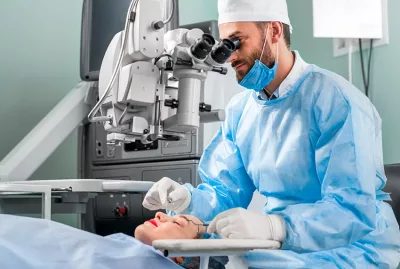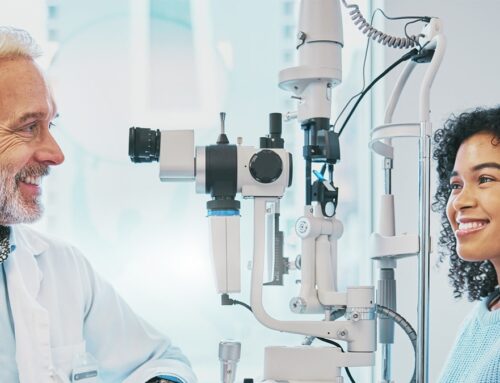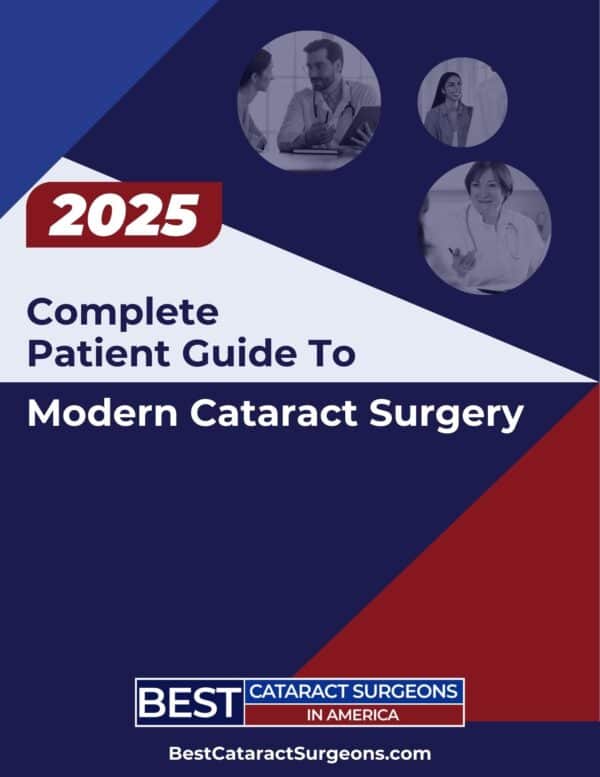You may know that you have a cataract, but you may not know what type of cataract affects you or even your loved one. There are numerous types of cataracts. As cataracts progress, the natural lens inside the eye can turn yellowish or brownish, making it difficult for you to read, drive, or perform your other activities.
Most cataracts are fixed the same way. Modern cataract surgery is a safe and effective procedure for getting rid of your cloudy natural lens and replacing it with a clear prescription lens implant.
Different types of cataracts
Cortical cataract
This type of cataract typically begins growing in the periphery or outside of your natural lens. It grows towards the center in a spoke-like pattern. These whitish spokes can scatter light, causing activities like nighttime driving to be difficult. Eventually, it can grow to involve the center of your vision such that your vision is blurry all the time.
Posterior subcapsular cataract
Posterior subcapsular or “PSC” cataracts typically start small in the center of your vision. Because they often involve the center of your vision early, these can cause symptoms to develop rapidly. In addition to old age, these cataracts can be caused by diabetes and corticosteroid use. This type of cataract can seem to progress much faster than others.
More About Subcapsular Cataracts
Nuclear sclerotic cataract
This is the most common type of cataract. Nuclear sclerotic cataracts, or “NSC”, typically grow slowly, causing colors to fade, contrast to diminish, vision in dim lighting to be impaired, as well as causing glare and halo symptoms. As an NSC grows your prescription can change with it. Sometimes your eye doctor may try to update your glasses, only to notice that in 6 months the prescription has already changed again. Once this type of cataract is fixed, your prescription typically does not change for the rest of your life.
Anterior polar cataract
This is a less common type of cataract that can appear like a dot in the middle of the eye, affecting kids. They are tiny and can be seen in the center of the pupil, but like most cataracts, typically are not visible to the naked eye.
Congenital cataracts
Some cataracts are caused by genetic factors. While cataracts most commonly affect adults, they can affect children and even newborns. Congenital cataracts are most commonly related to genetic factors or other medical problems. Typically pediatric ophthalmologists treat these typical of cataracts as there are other considerations when cataract surgery is needed at such a young age in a developing eye.
Secondary cataract
 This one is a little different from the rest… A secondary cataract is very common, but is something that occurs after your cataract has been removed. The structure in the eye that holds your new lens implant after cataract surgery in place is called the “posterior capsule”. This capsule can have cells grow over it causing it to become a film that blurs vision. This “posterior capsular opacification” is what is also called a “secondary cataract.
This one is a little different from the rest… A secondary cataract is very common, but is something that occurs after your cataract has been removed. The structure in the eye that holds your new lens implant after cataract surgery in place is called the “posterior capsule”. This capsule can have cells grow over it causing it to become a film that blurs vision. This “posterior capsular opacification” is what is also called a “secondary cataract.
The treatment for fixing a secondary cataract is very quick and painless. A laser procedure is performed in the office and takes about one minute. Once the capsule is treated with laser, the secondary cataract never grows back.
More About Secondary Cataracts
Senile cataract
Senile cataract is a term that refers to a cataract that results primarily due to age. This most commonly refers to a nuclear sclerotic type of cataract. This is a common cataract that affects everyone if they live long enough.
Bilateral cataracts
This is a term that refers to having cataracts in both eyes. It is most common for patients to have similar cataracts in both eyes. As a result, most patients have cataract surgery on their two eyes within a few weeks of one another. Virtually any type of cataract can be bilateral. When a cataract occurs in only one eye, we call it “unilateral”.
More About Bilateral Cataracts
Summary of types of cataracts
While there are many different types of cataracts, the good news is that modern cataract surgery can fix them all. In the hands of an expert surgeon, any of these types of cataracts are treatable with safe and effective techniques. If you do have a cataract and need to find a surgeon in your area, please visit our doctor finder page here.











